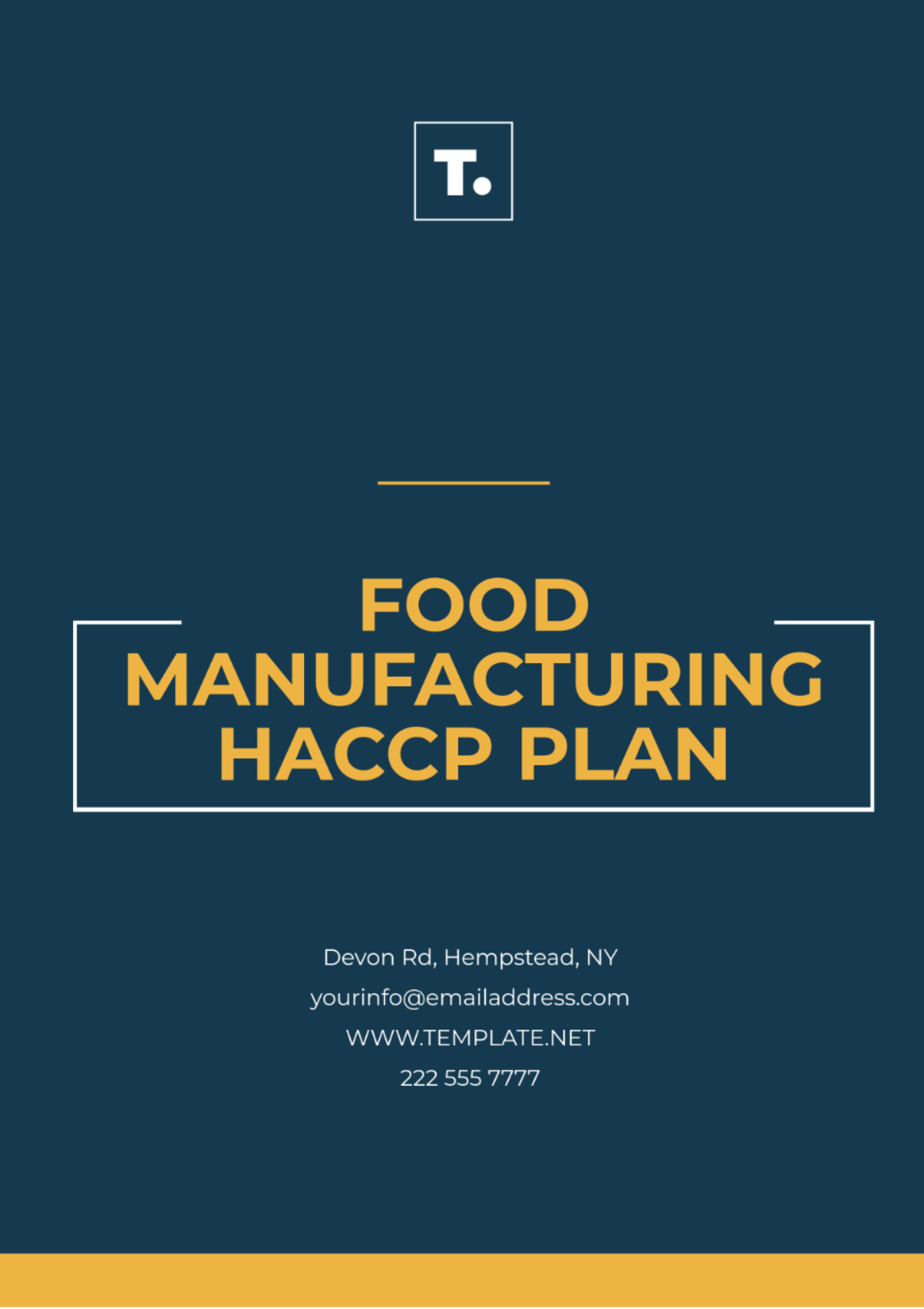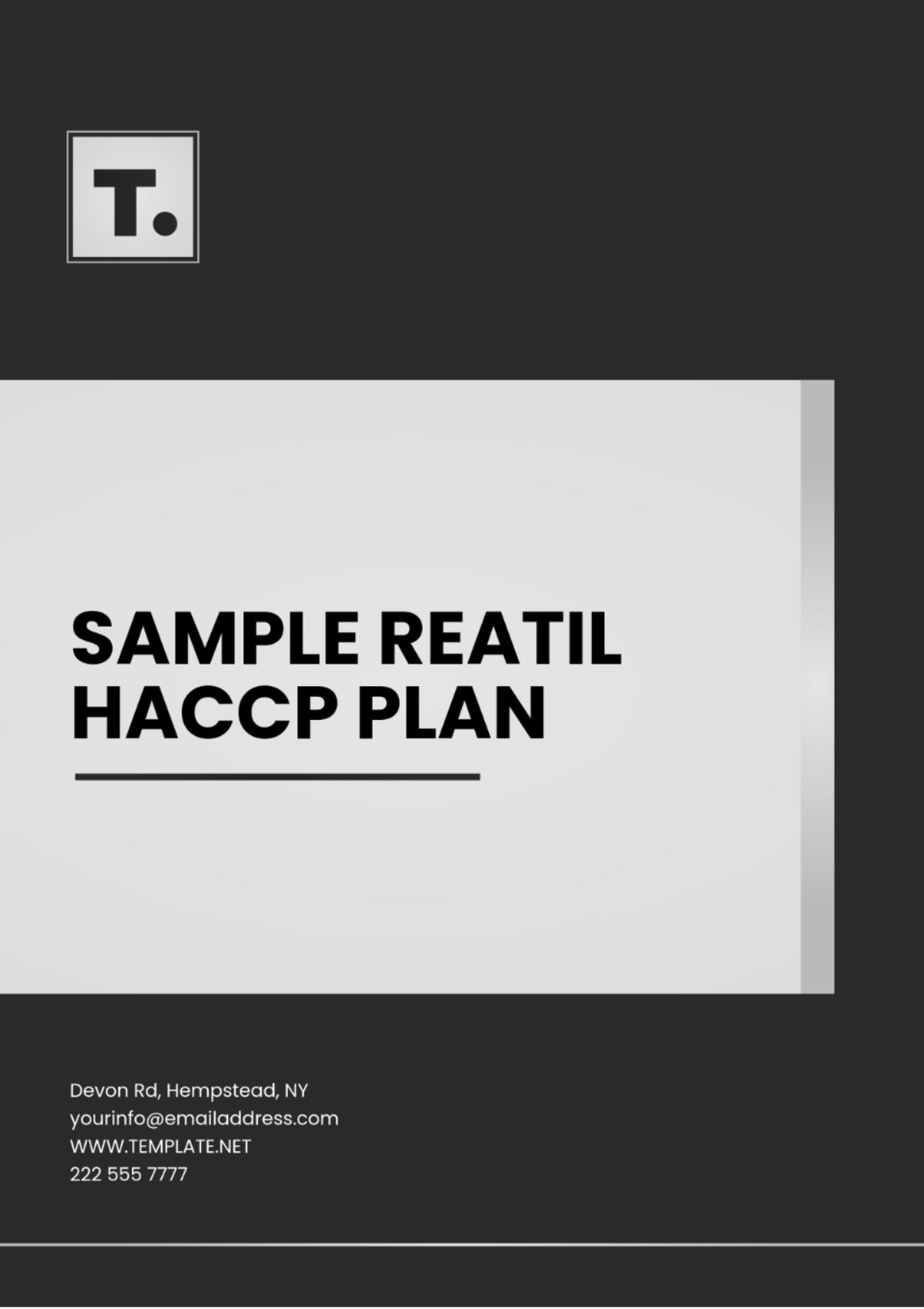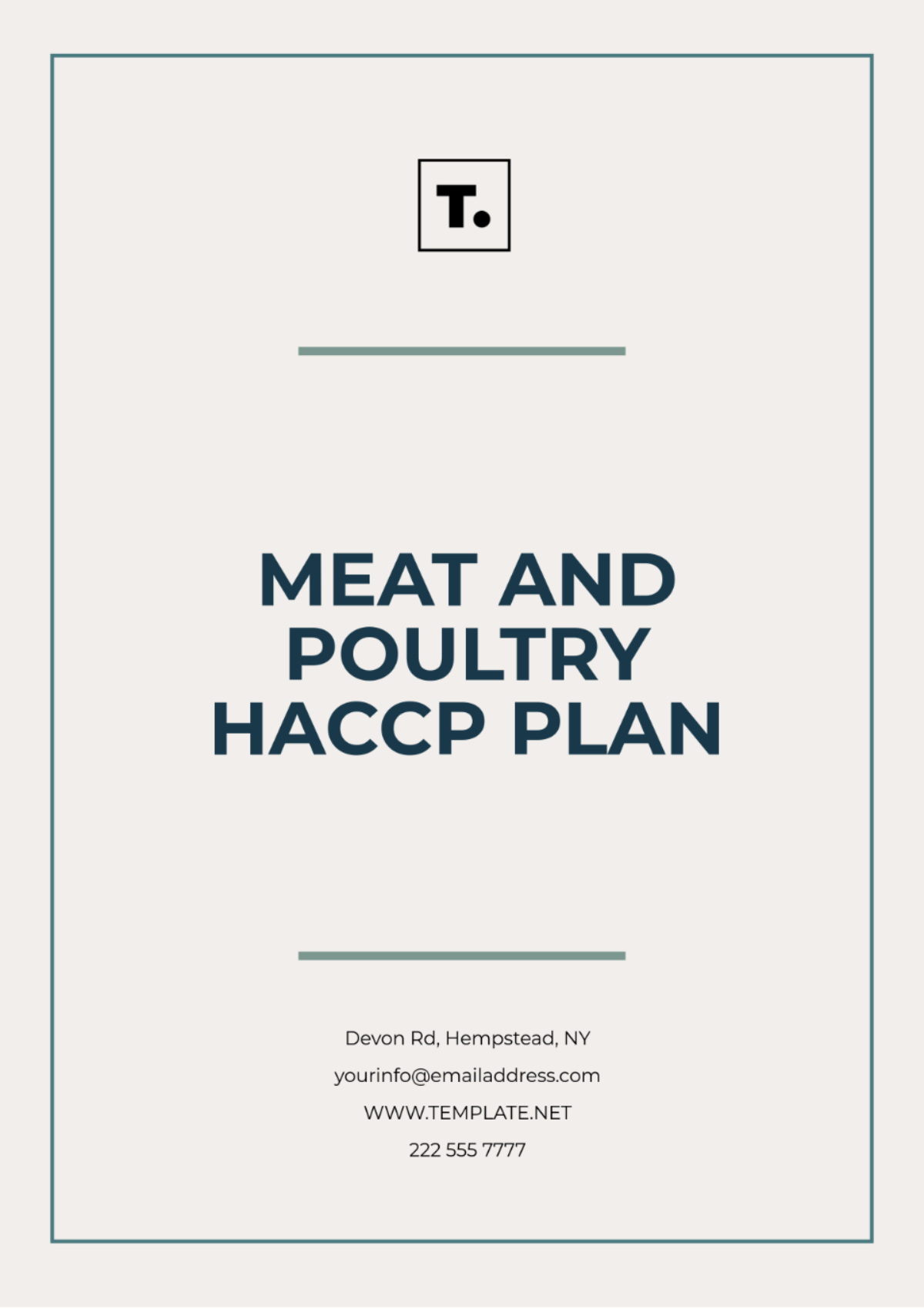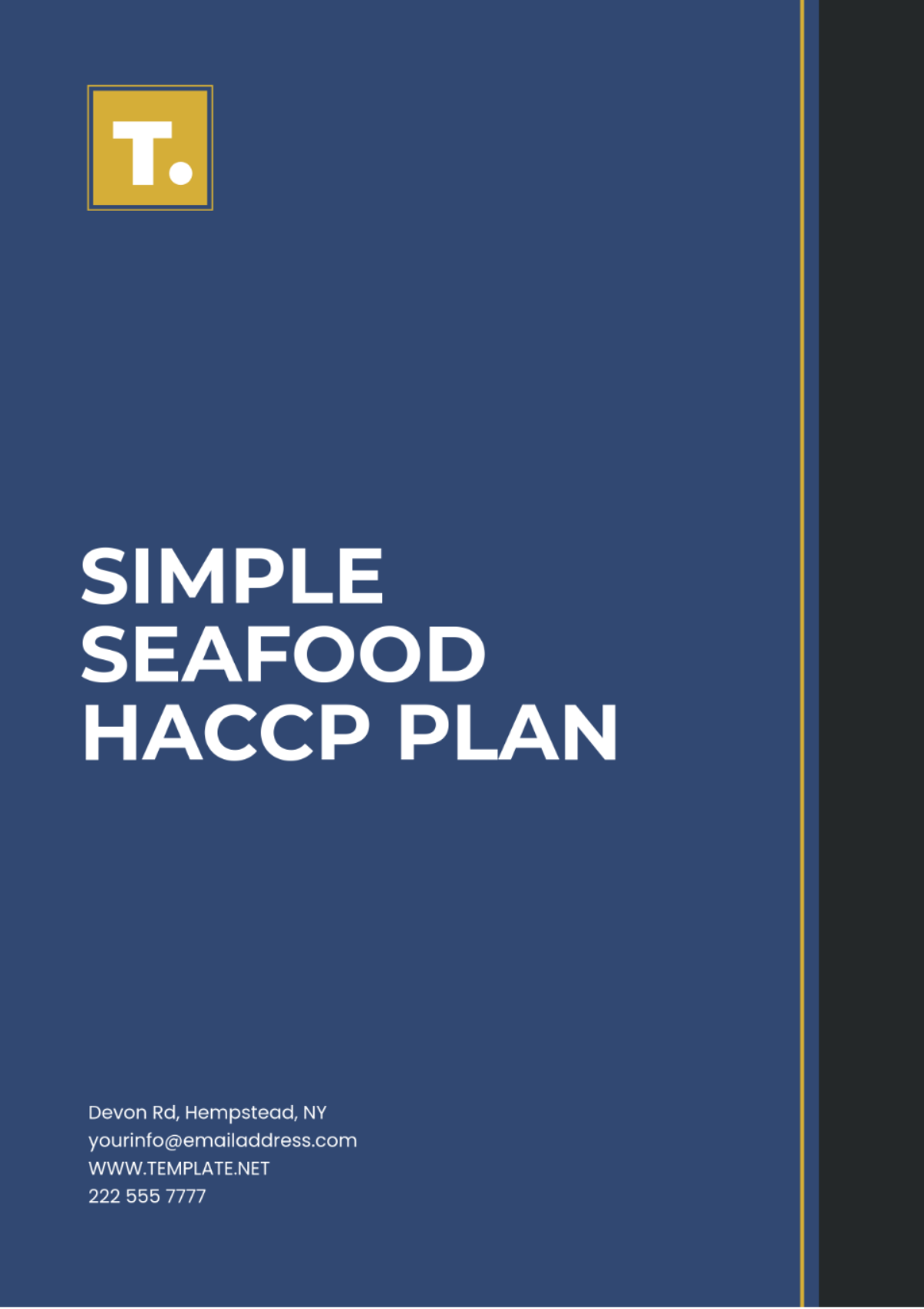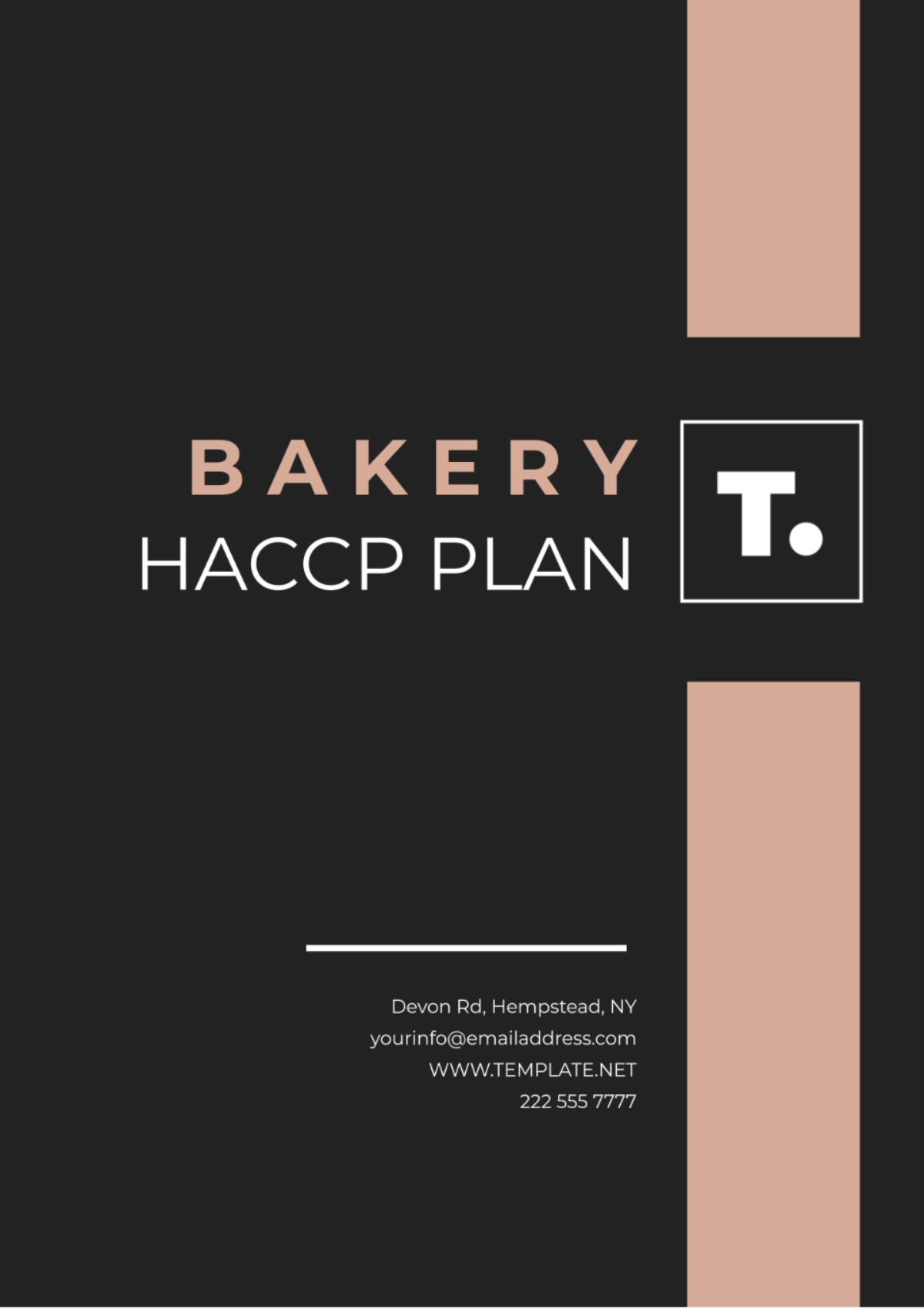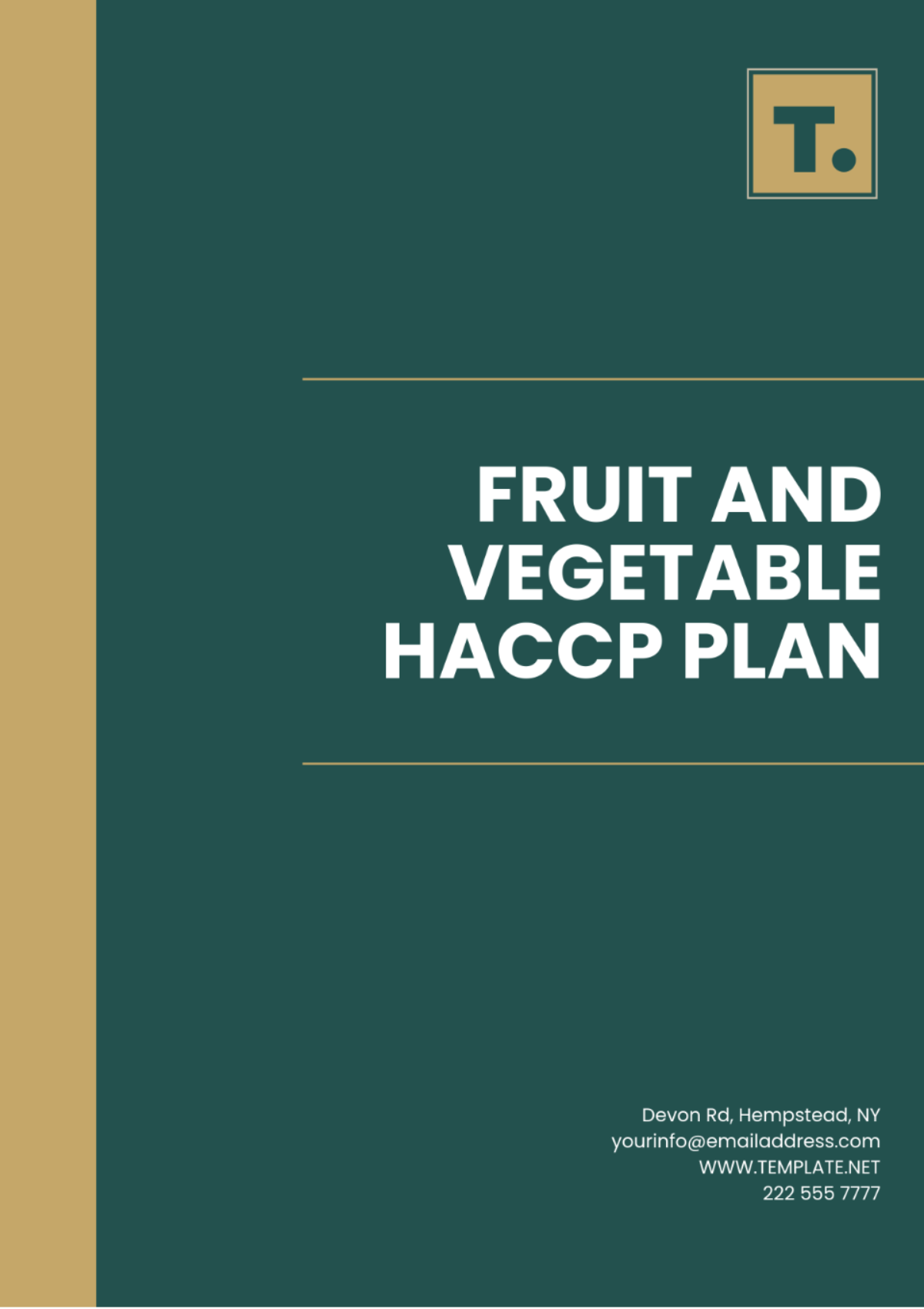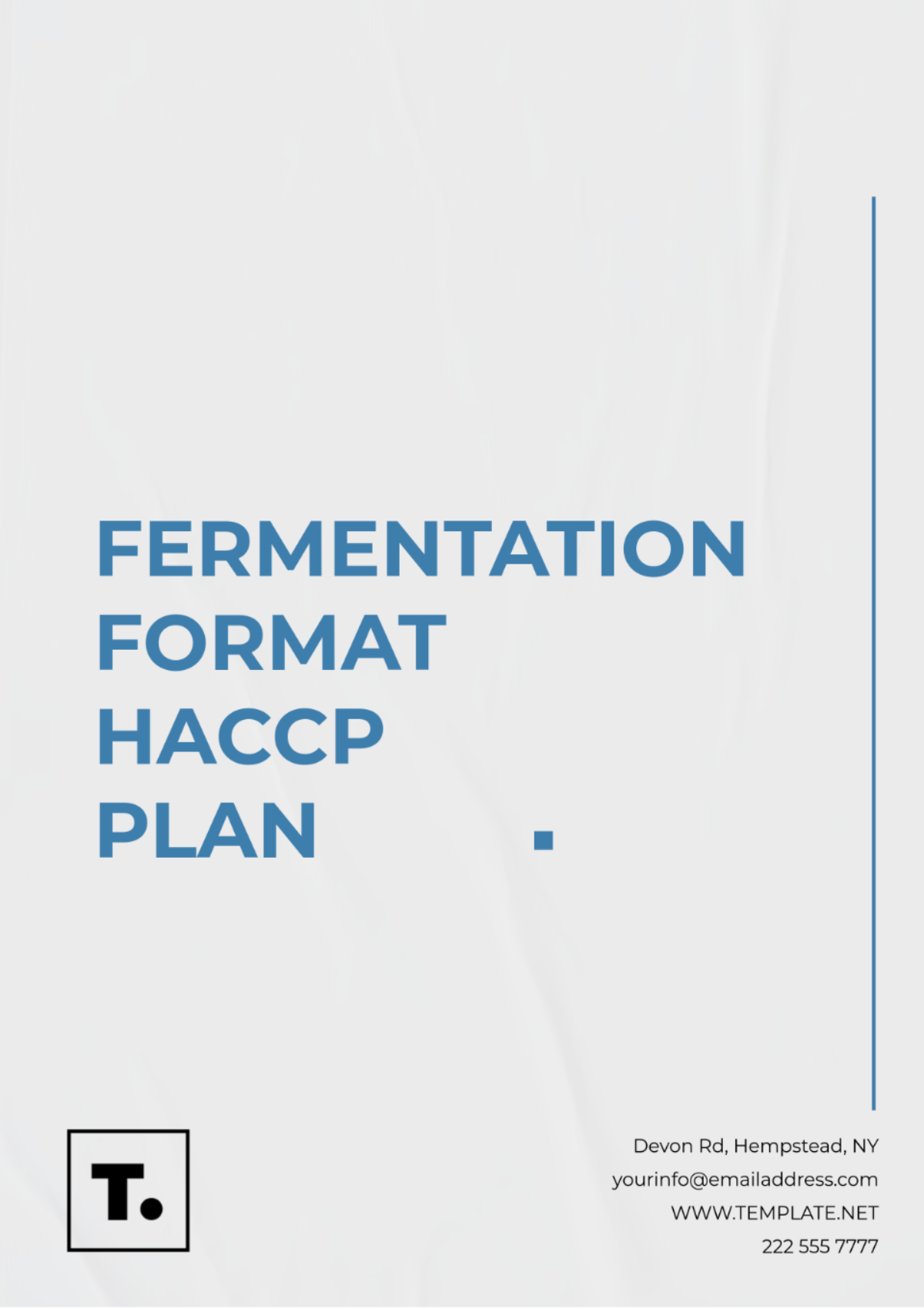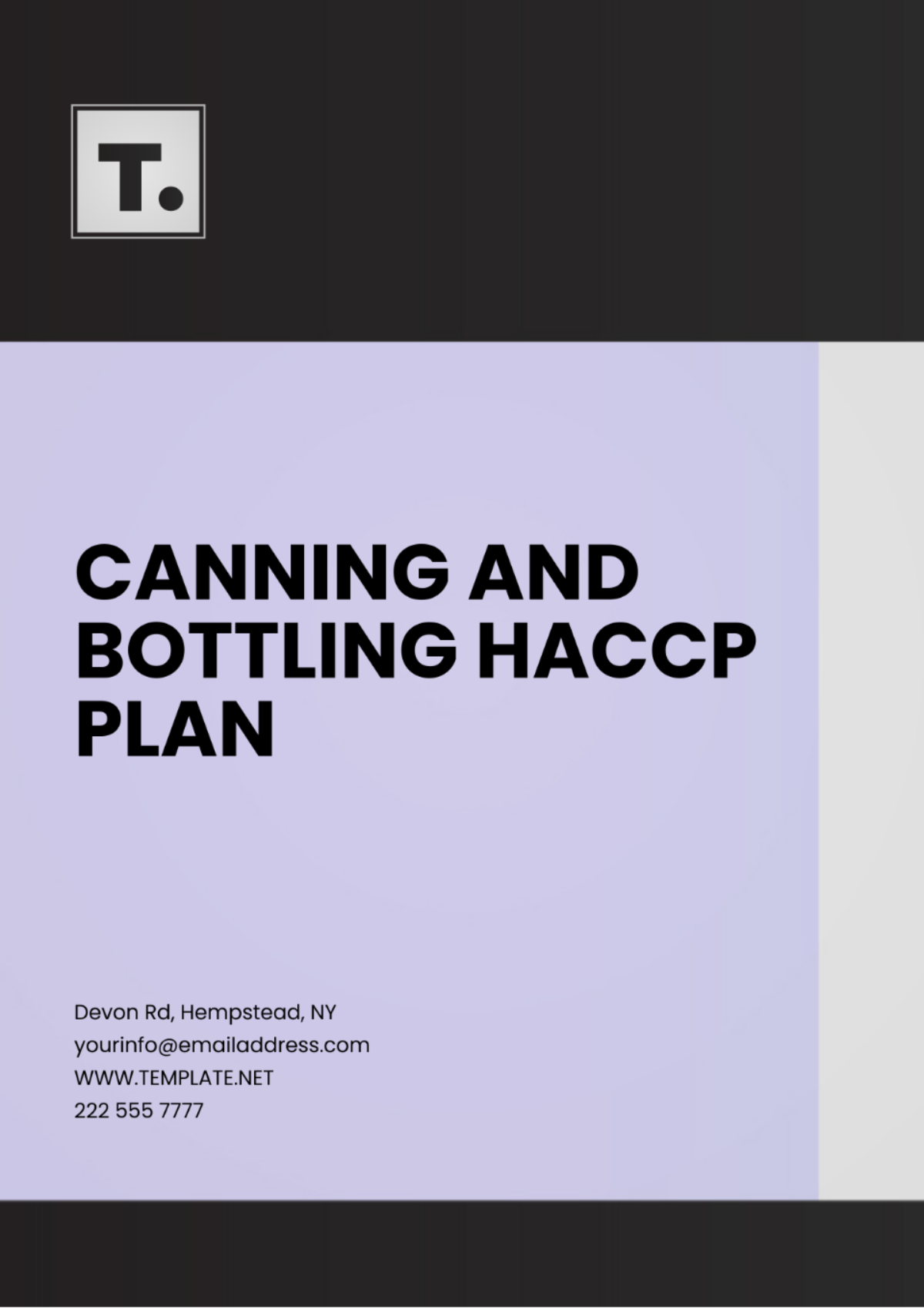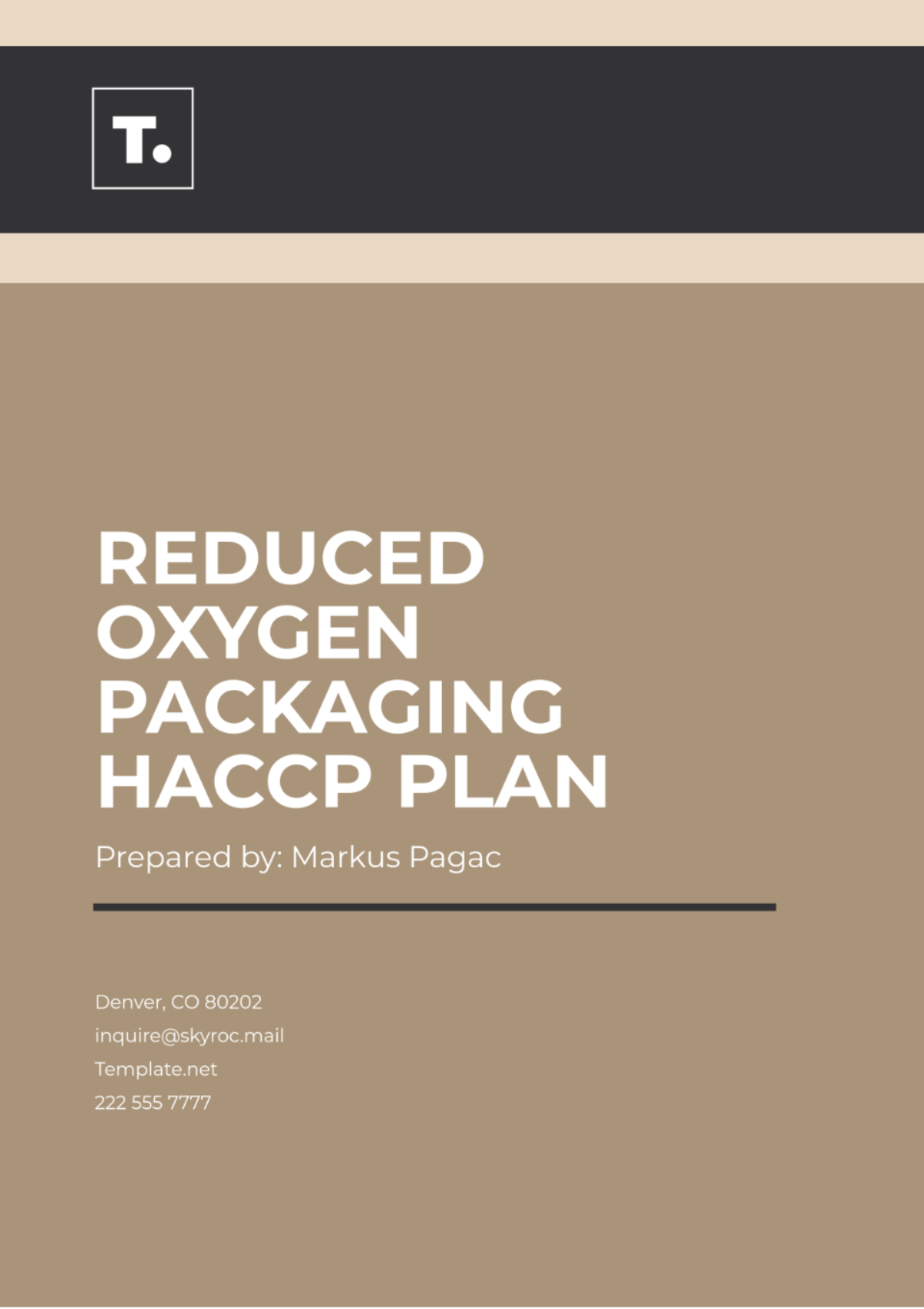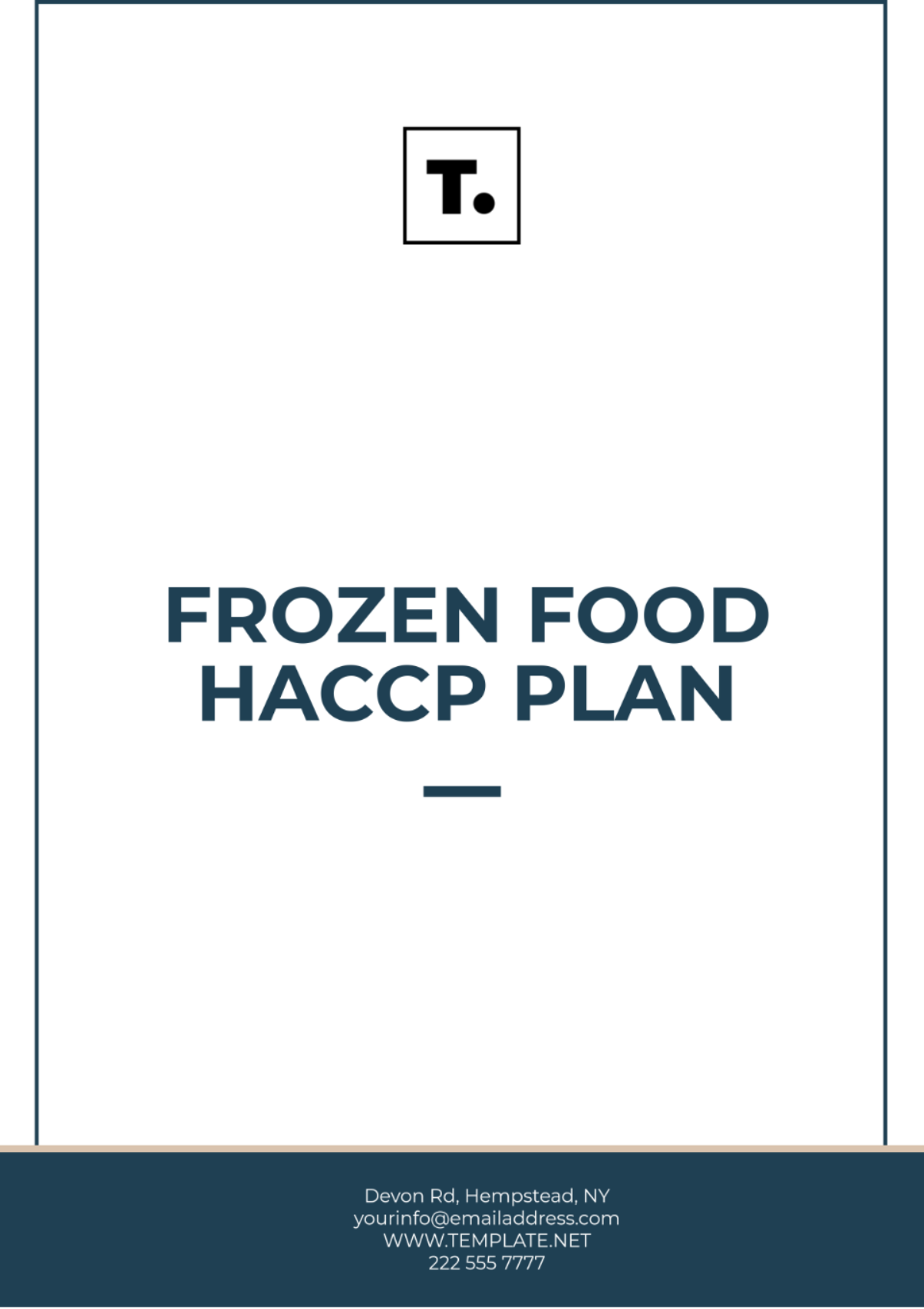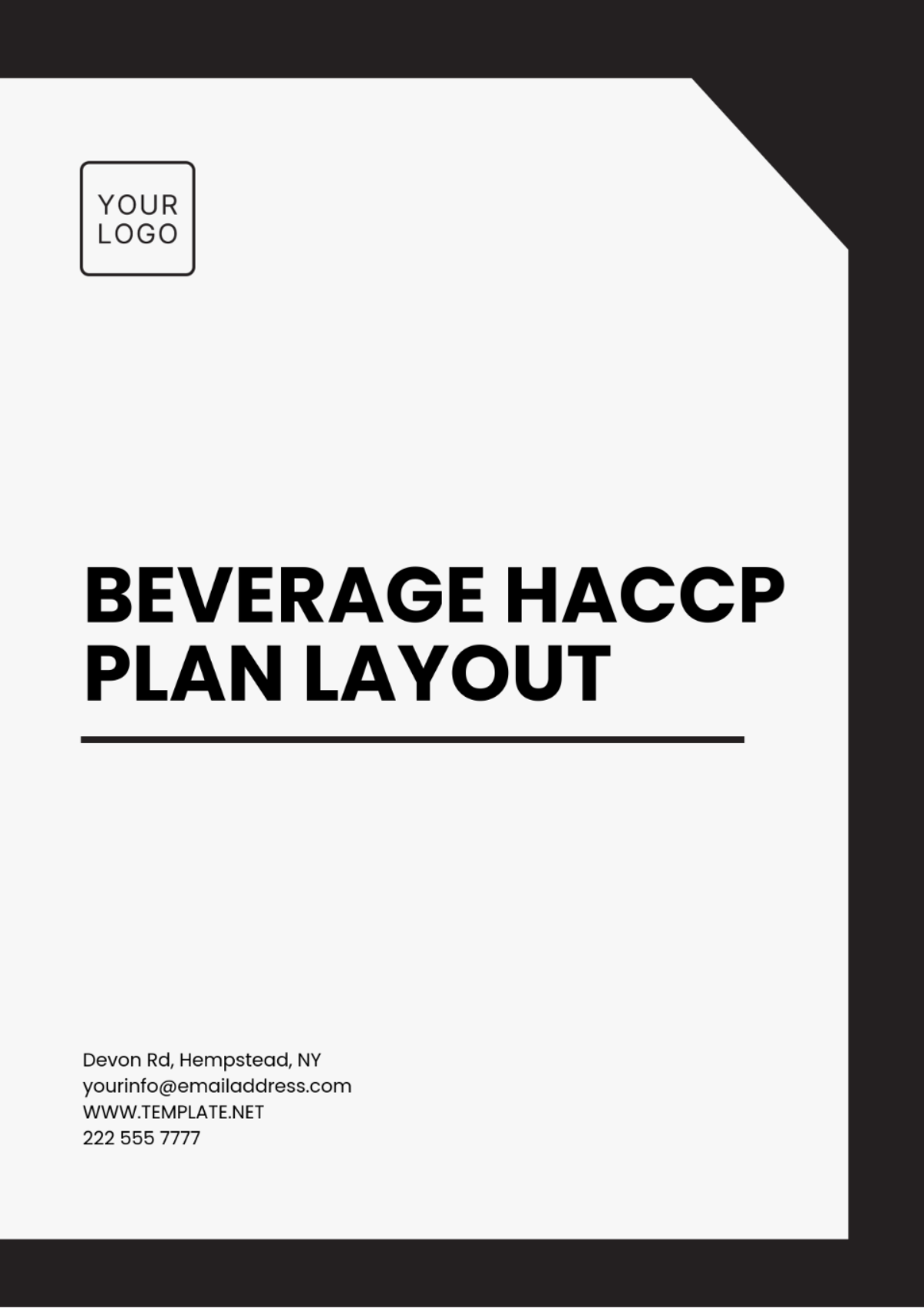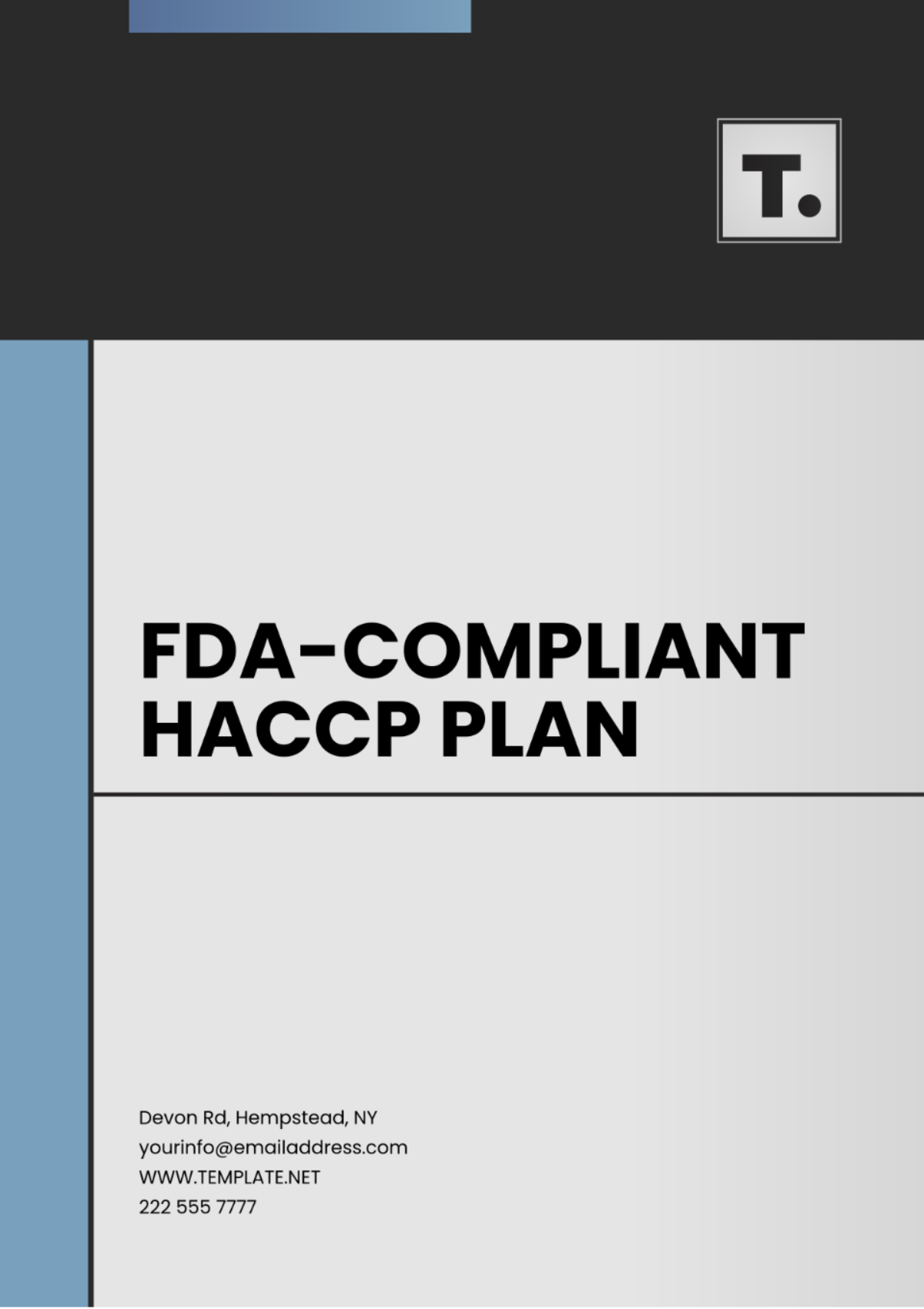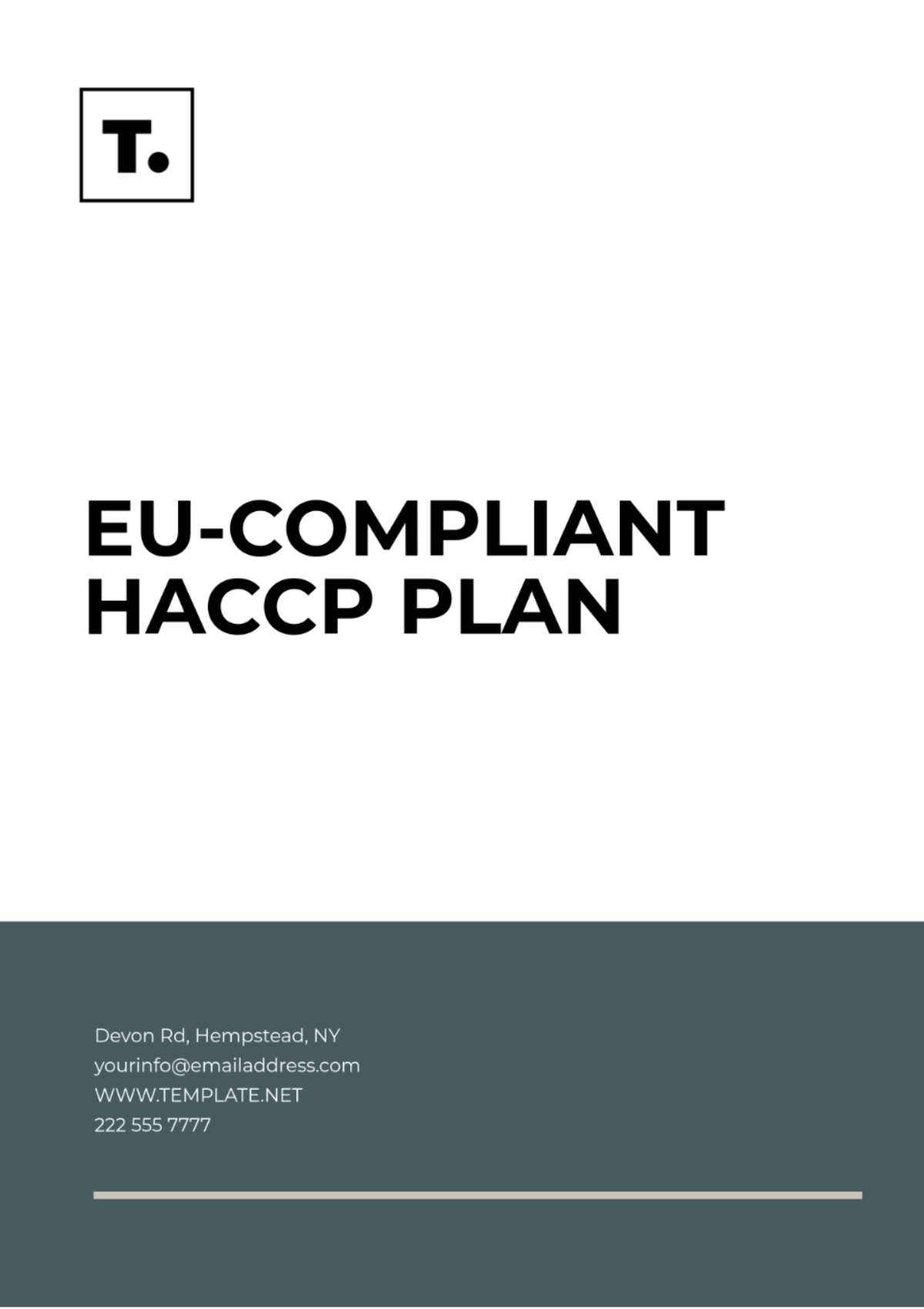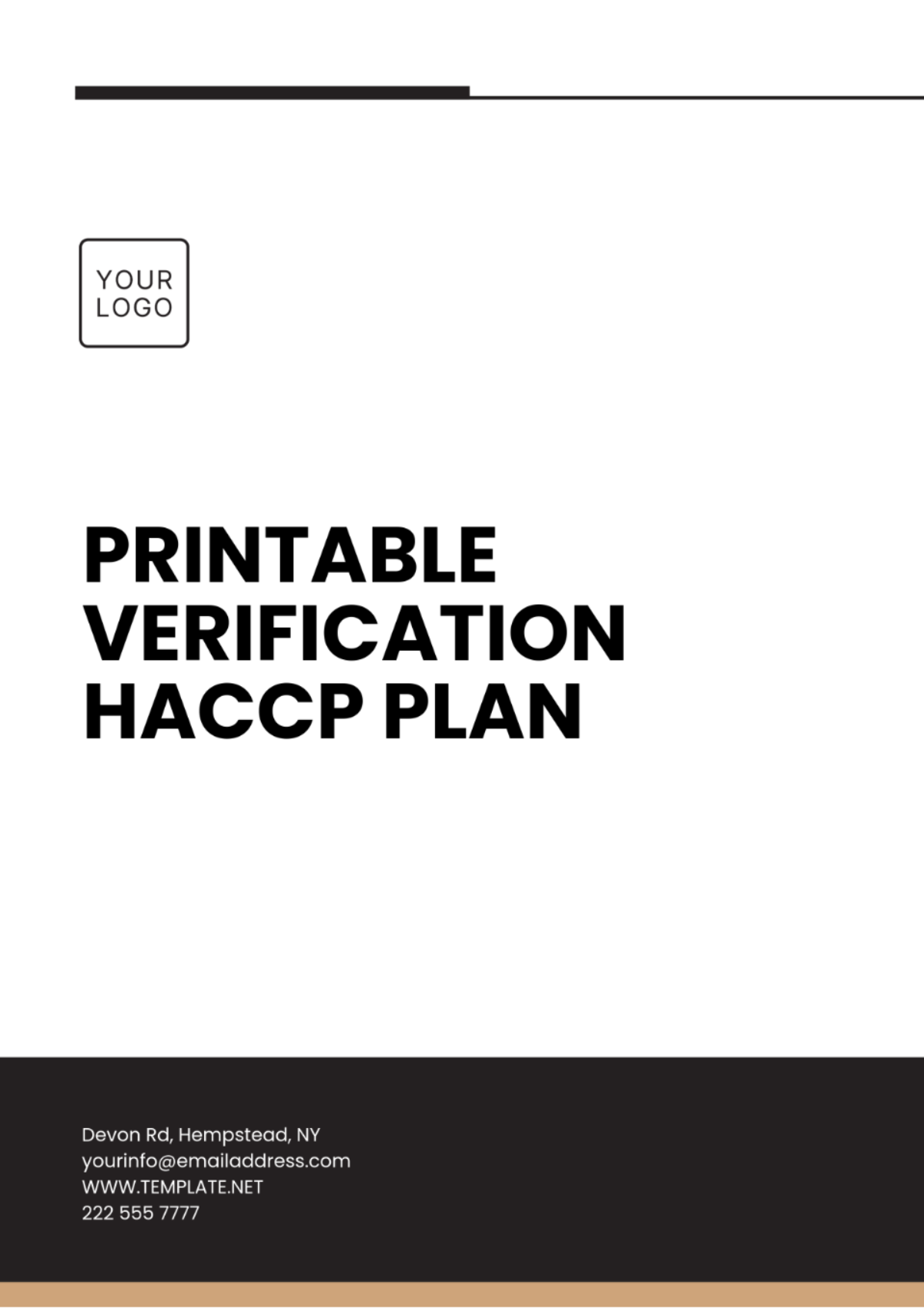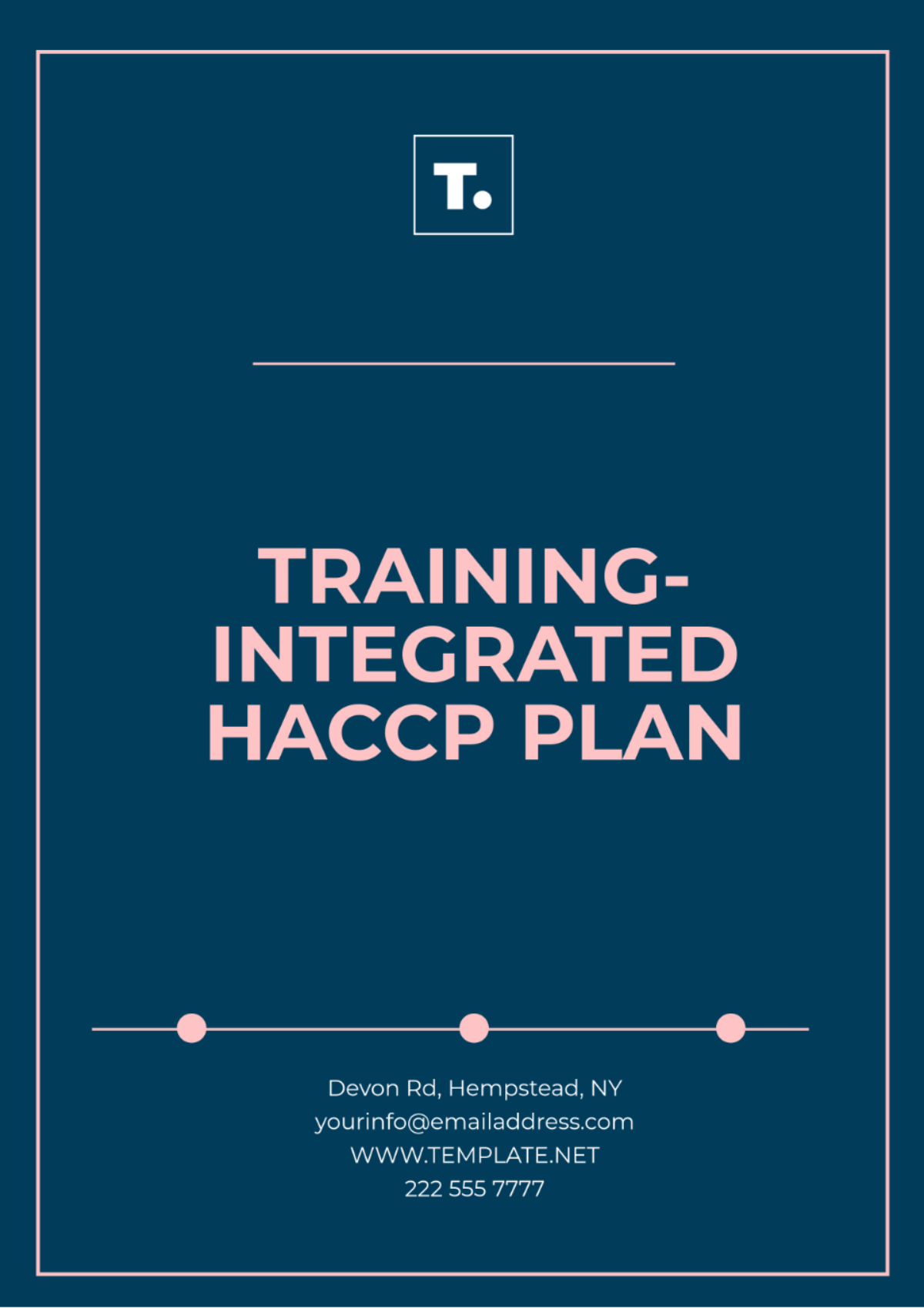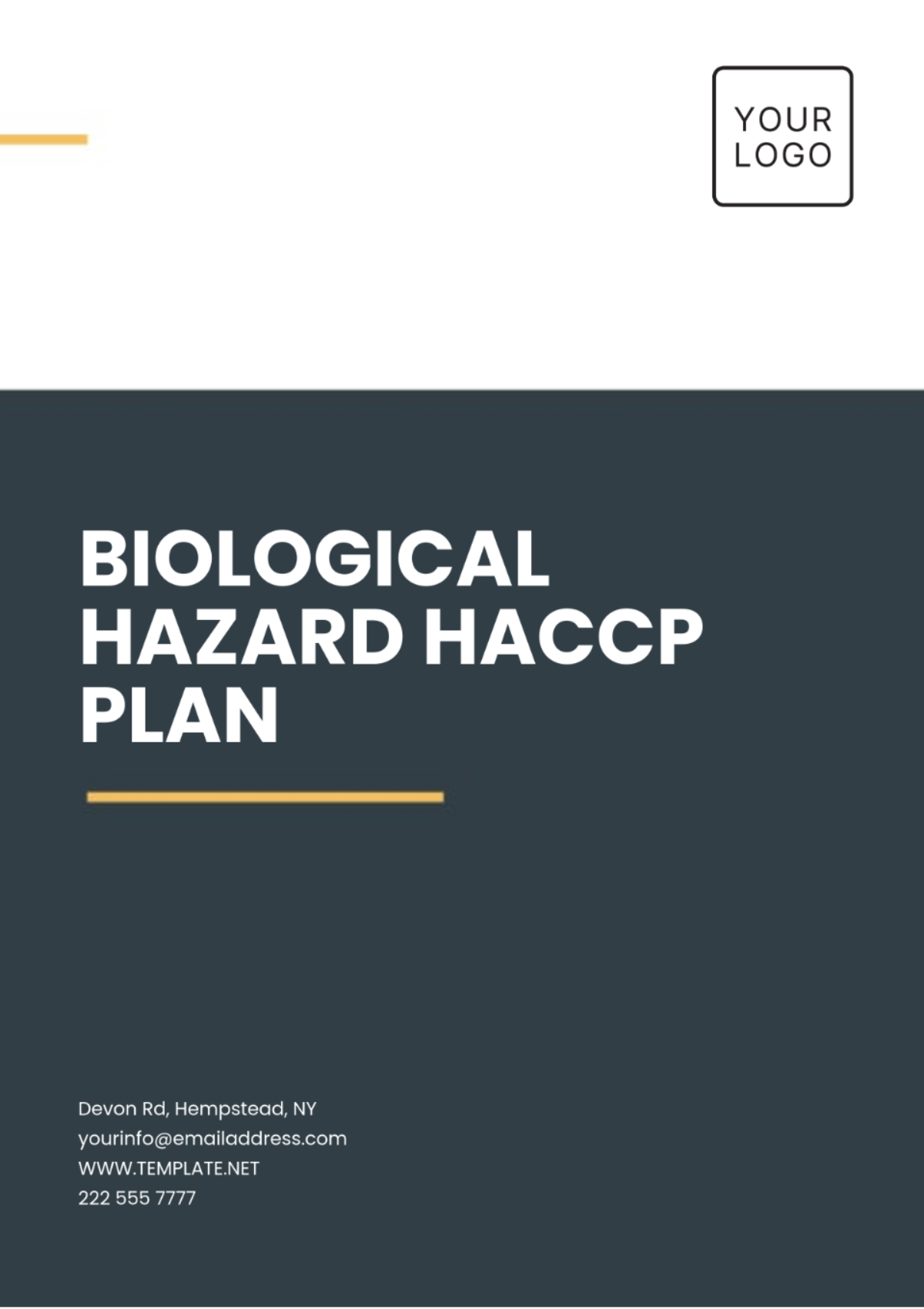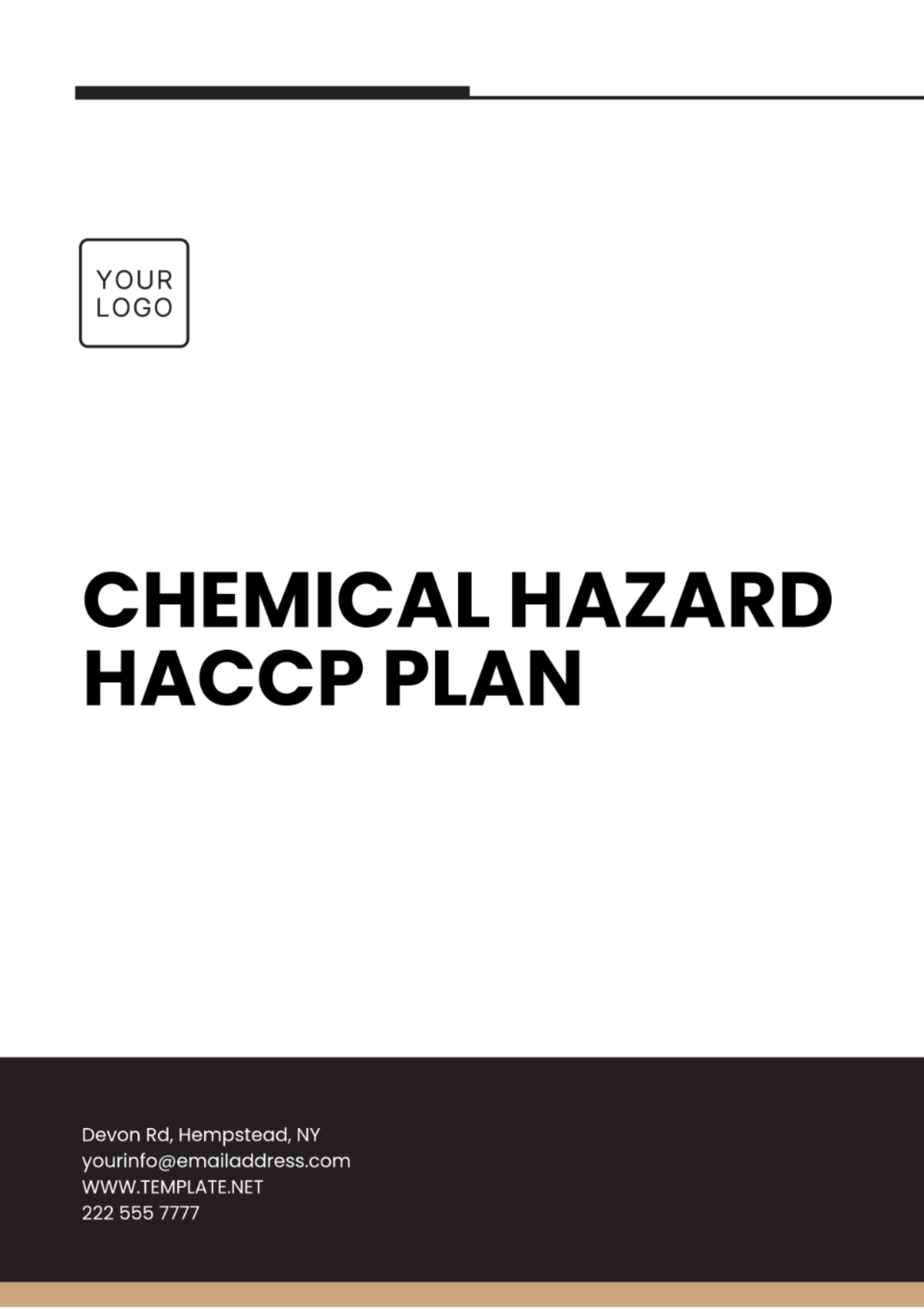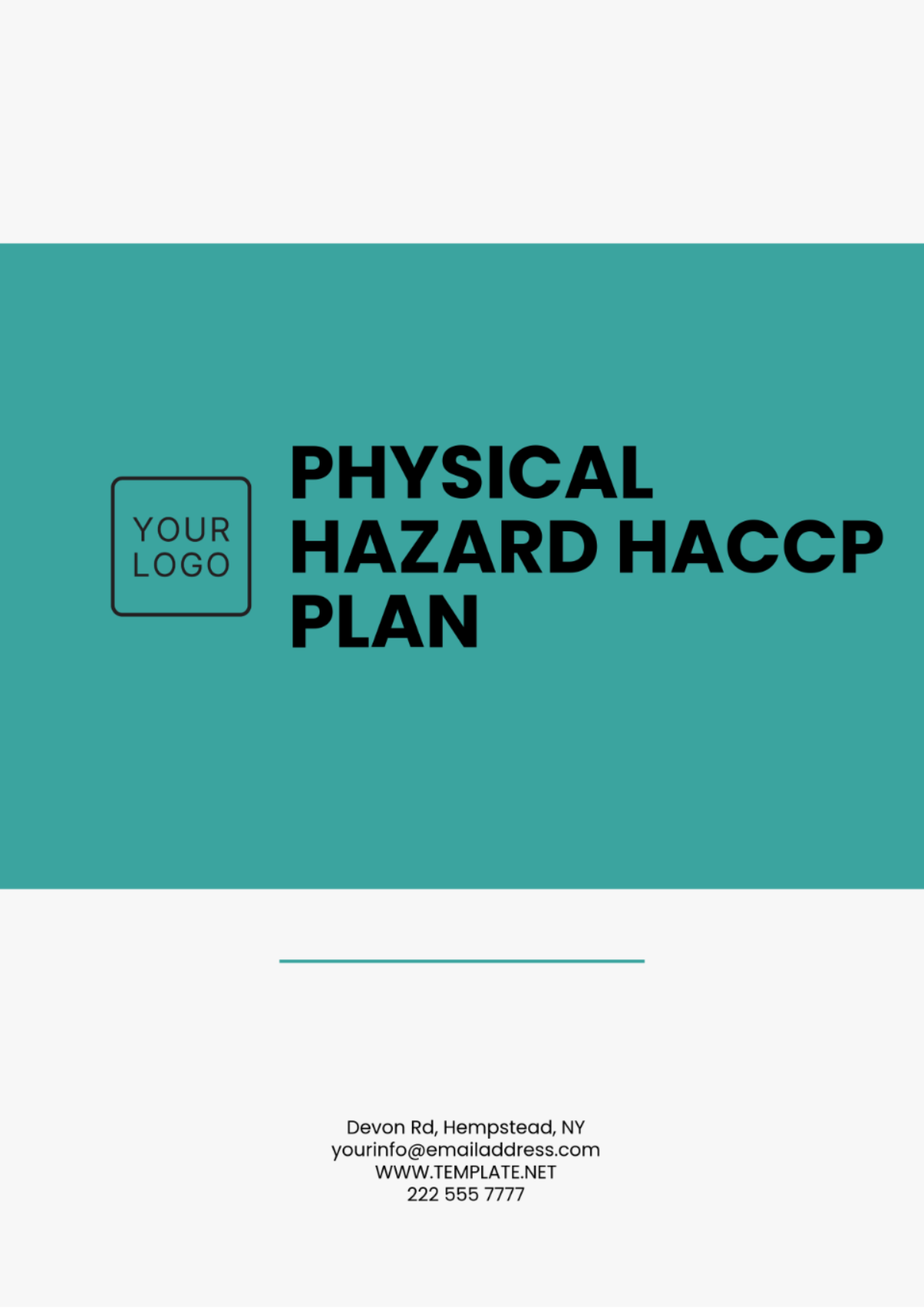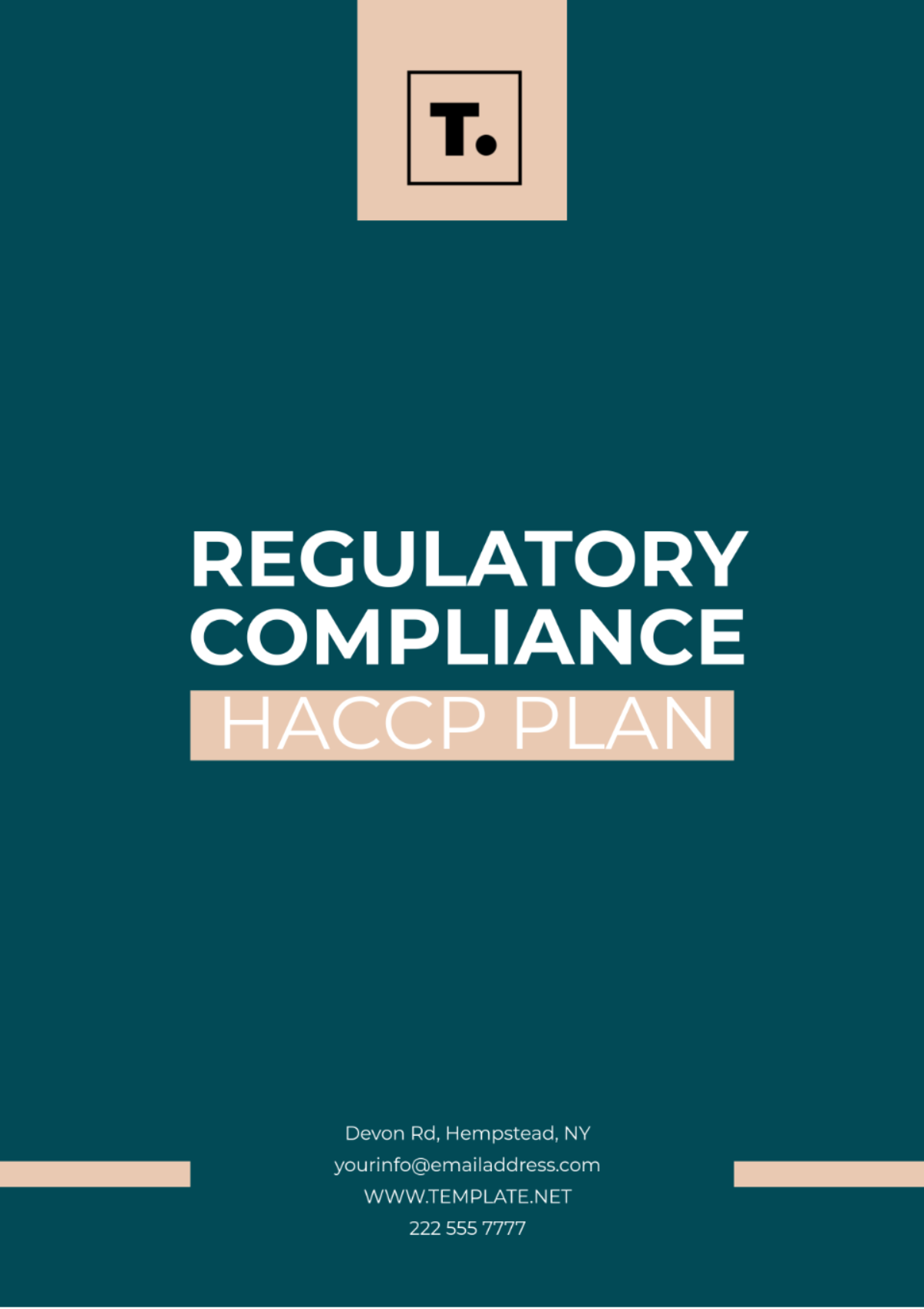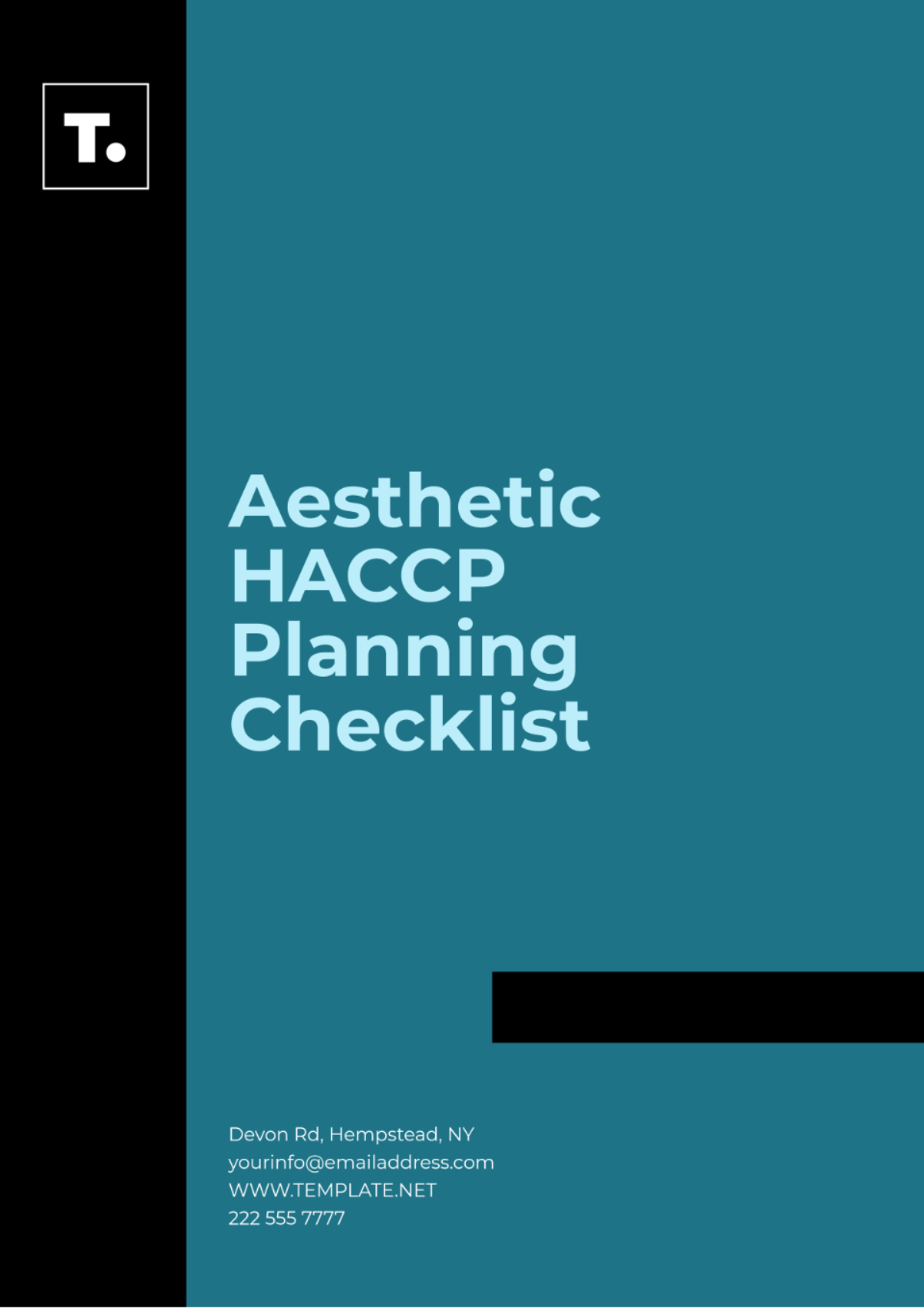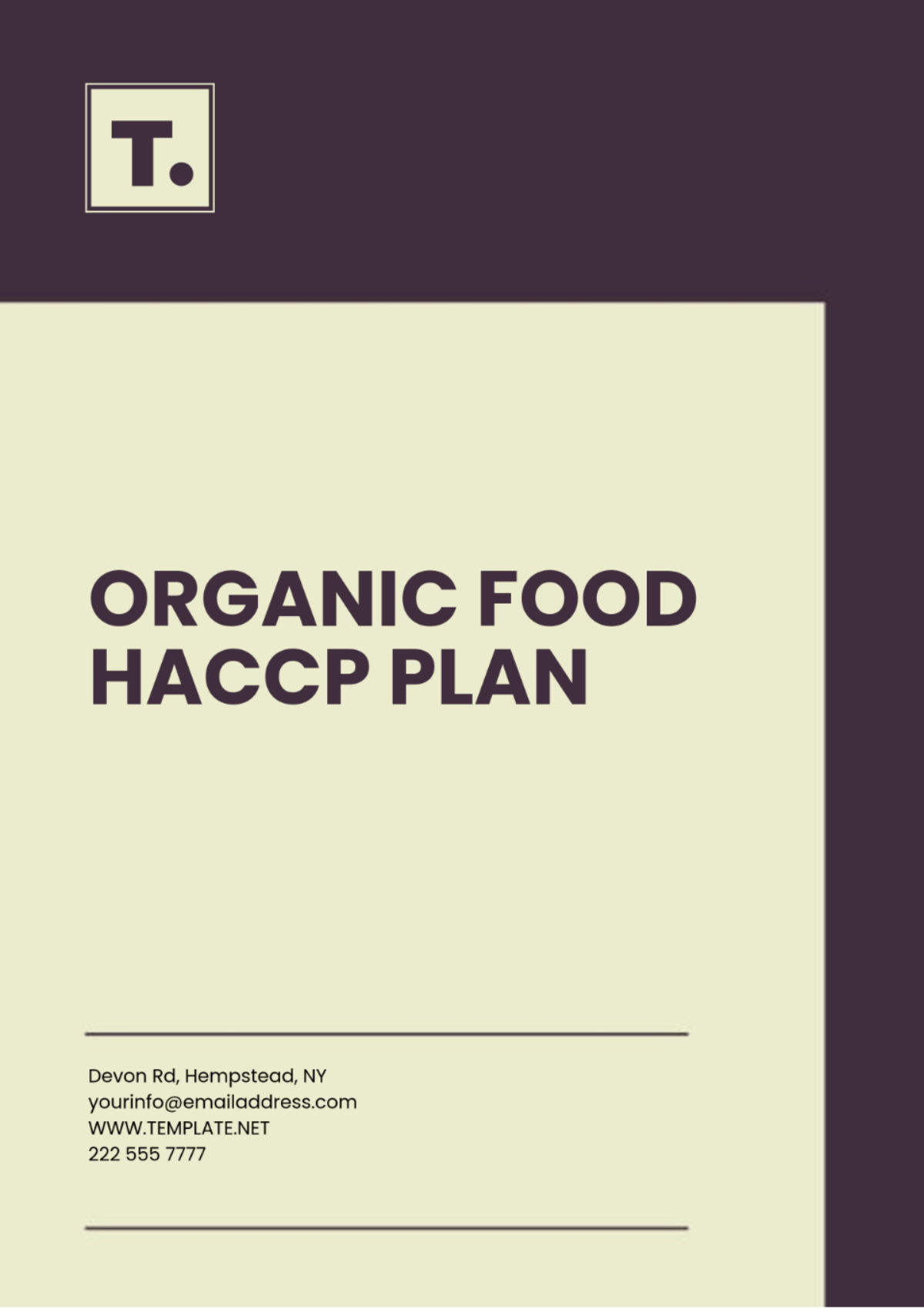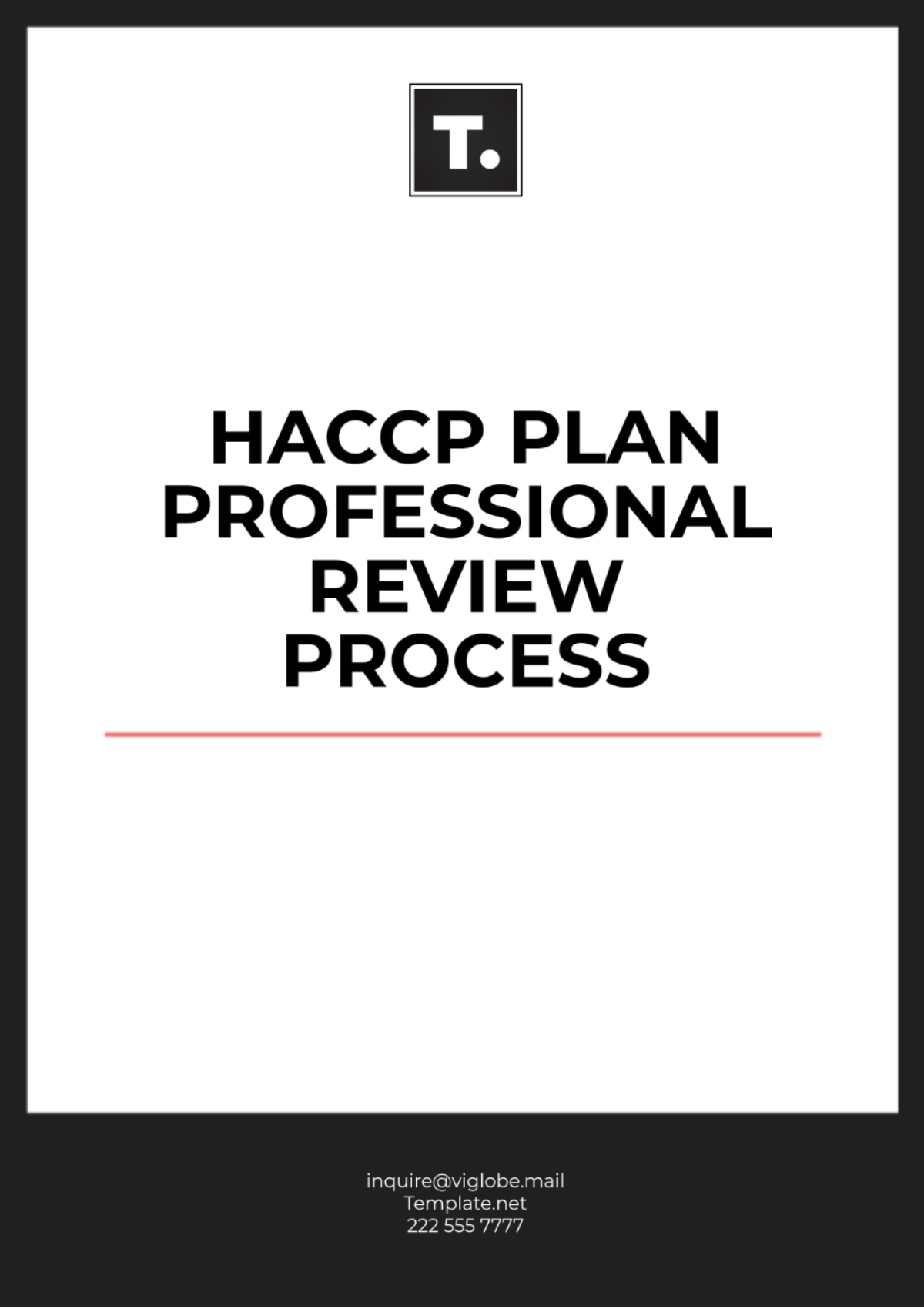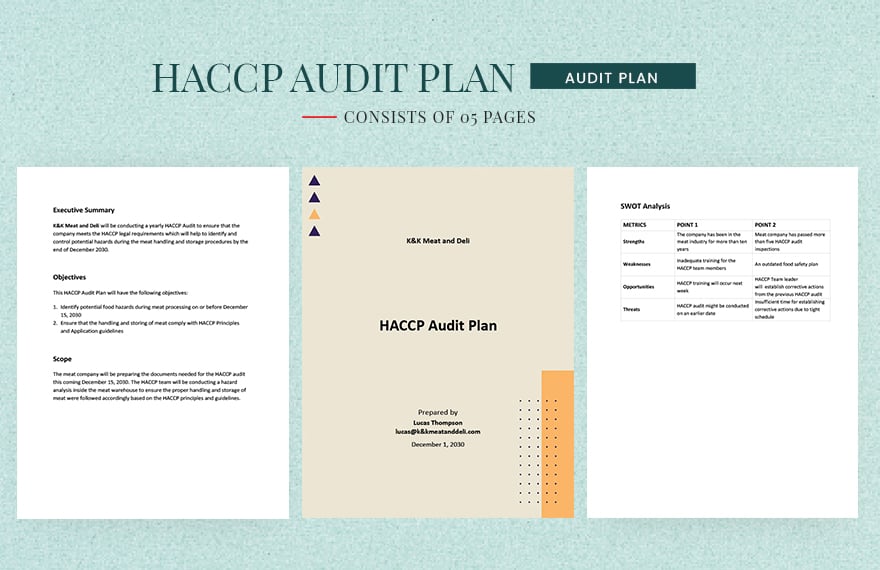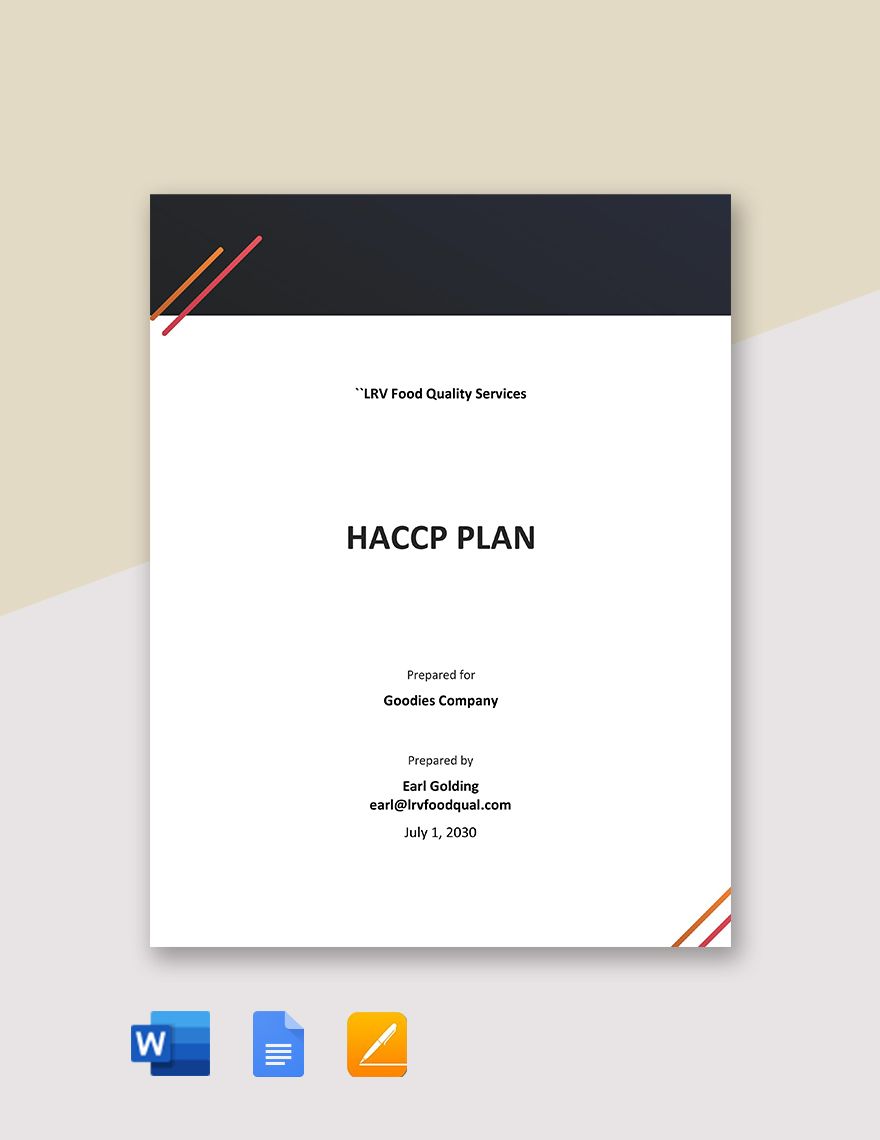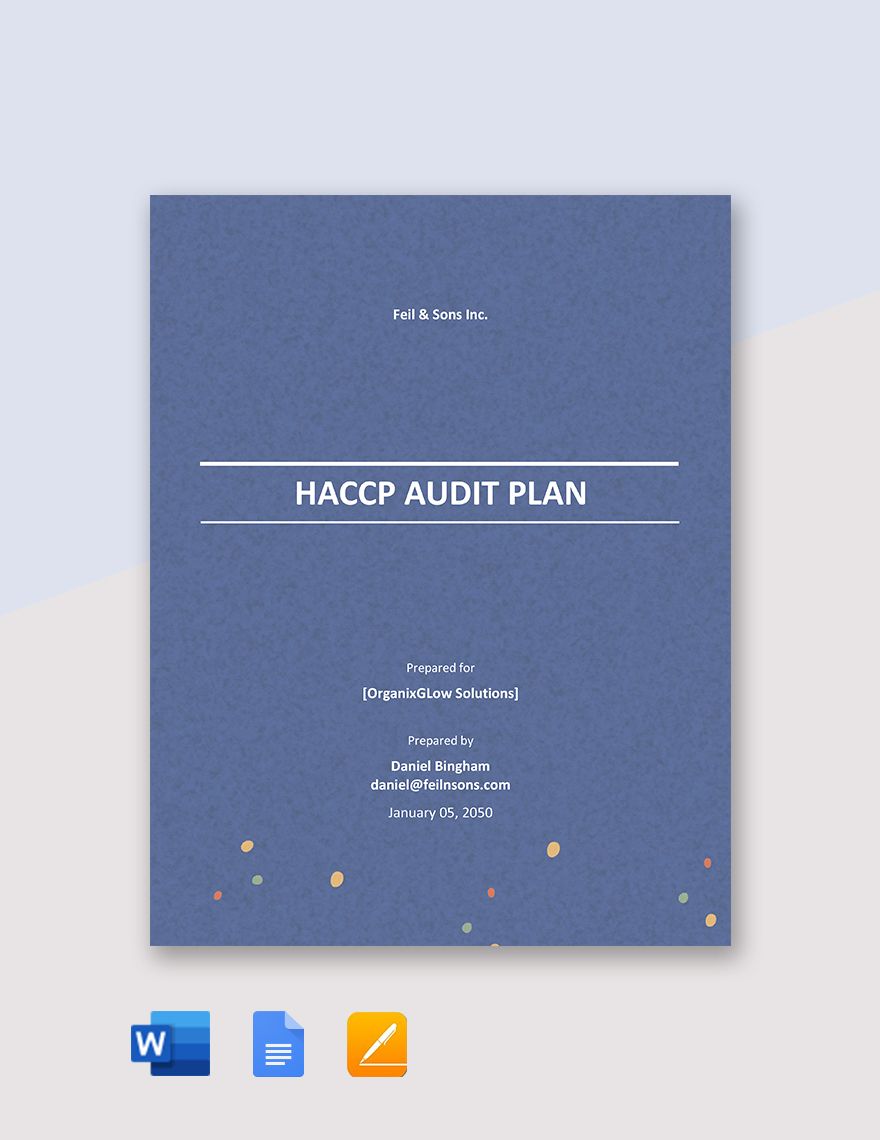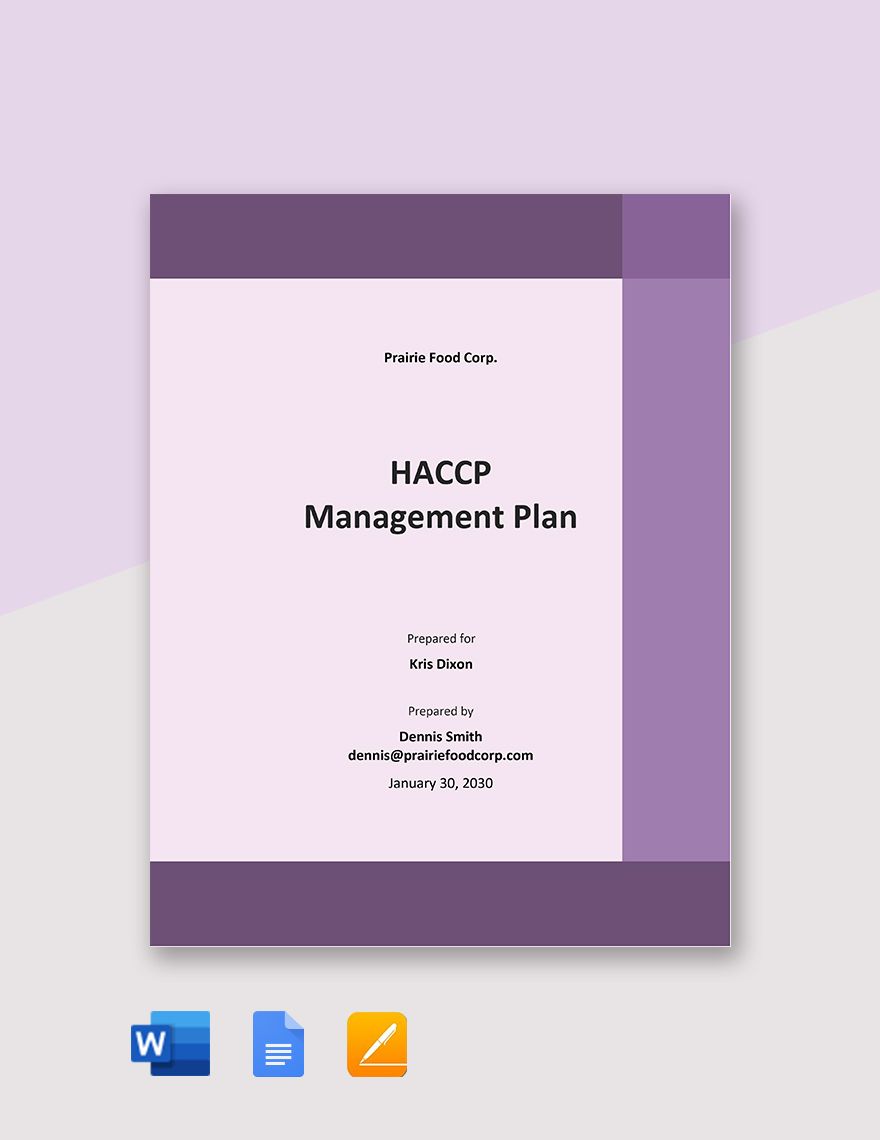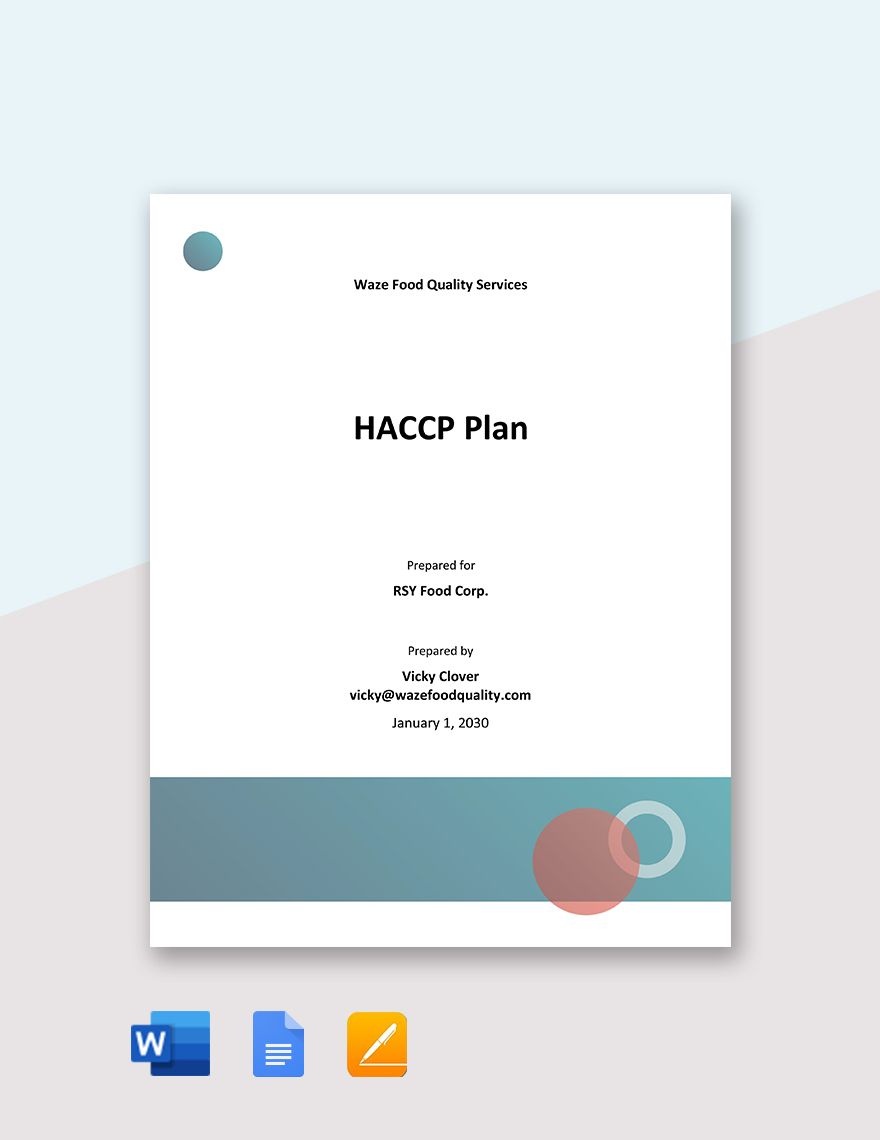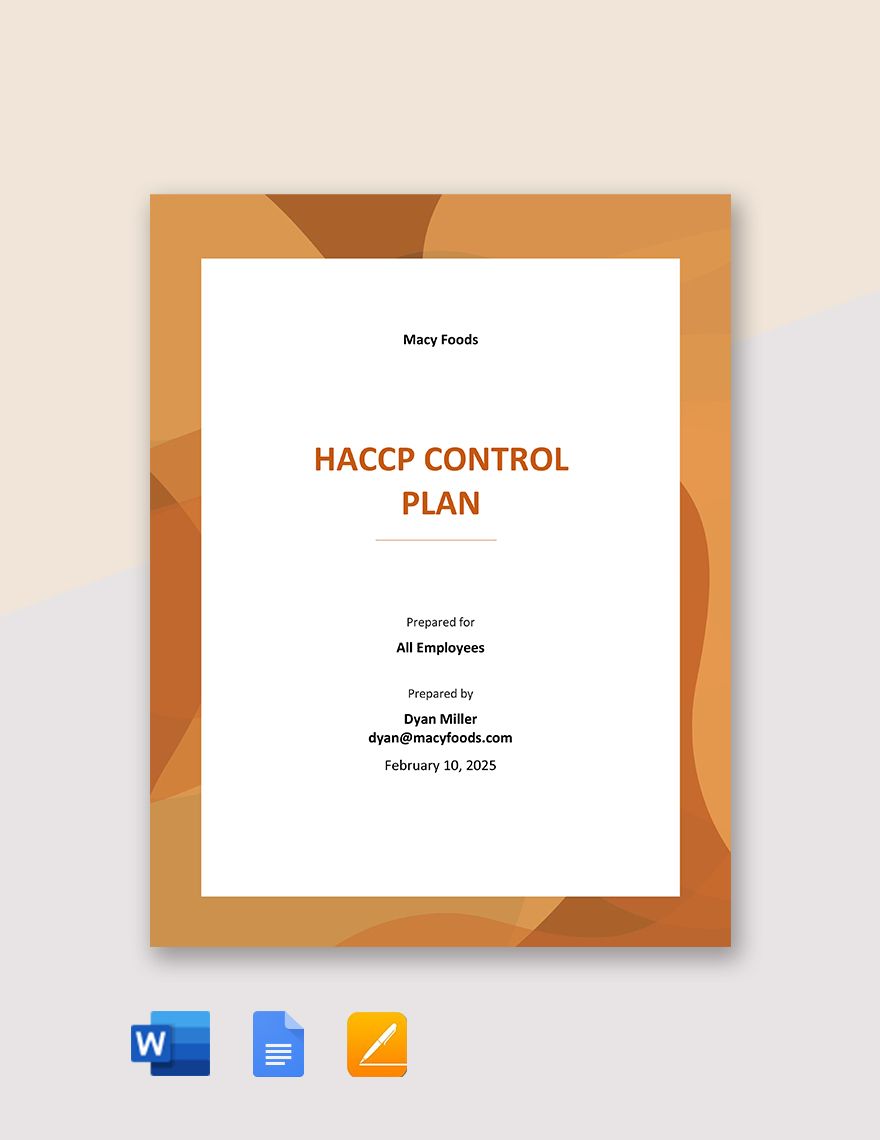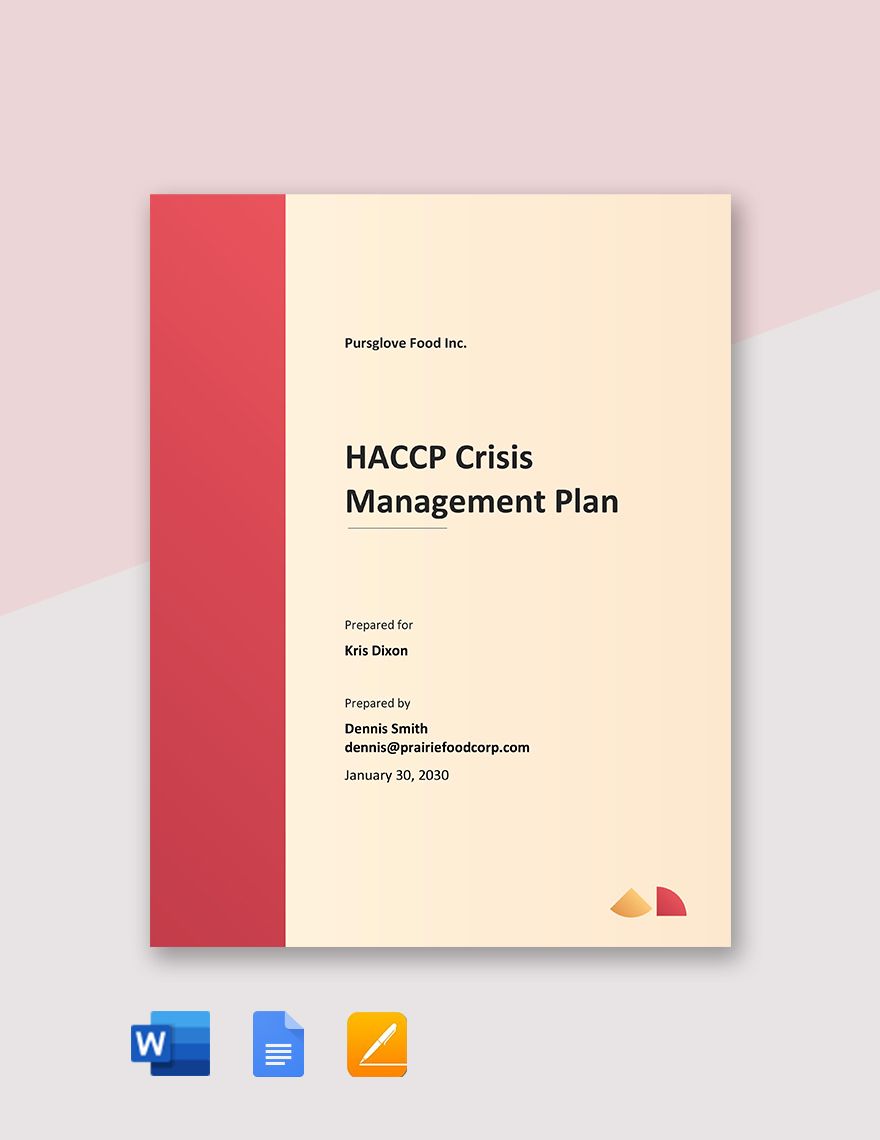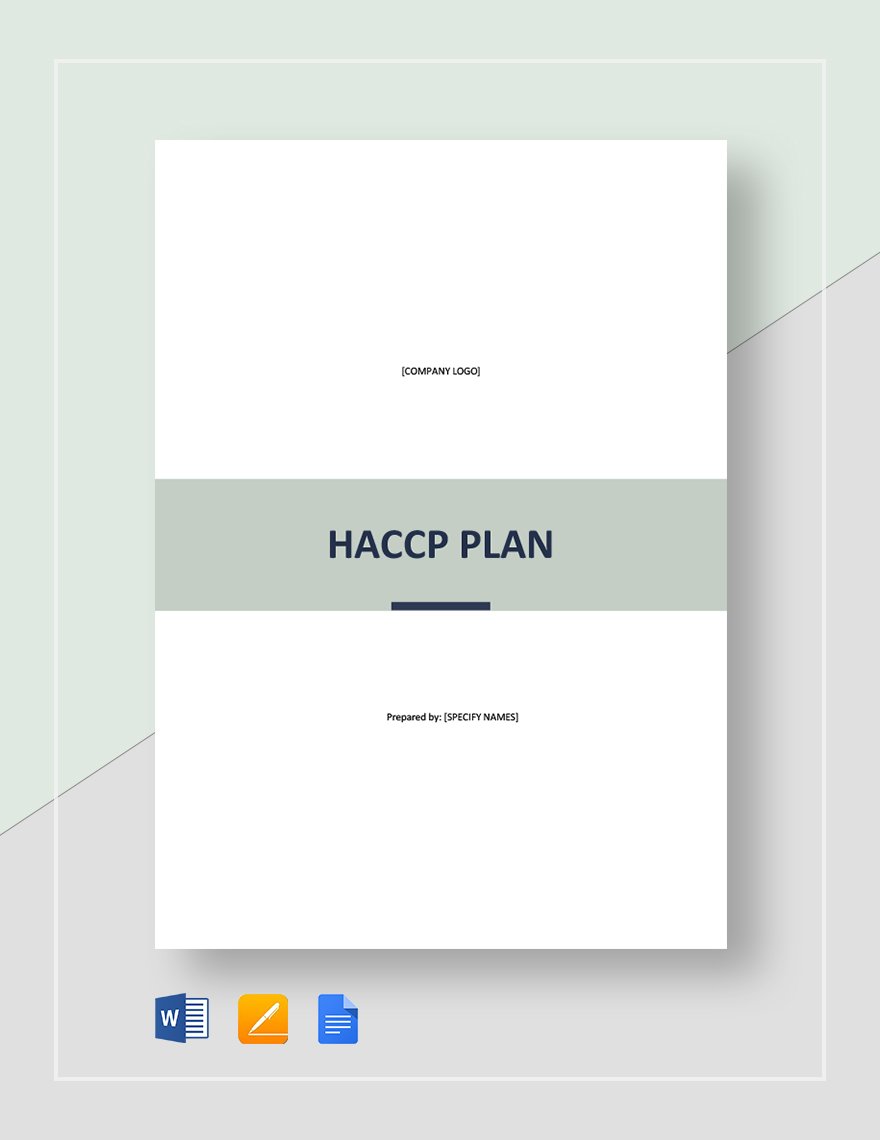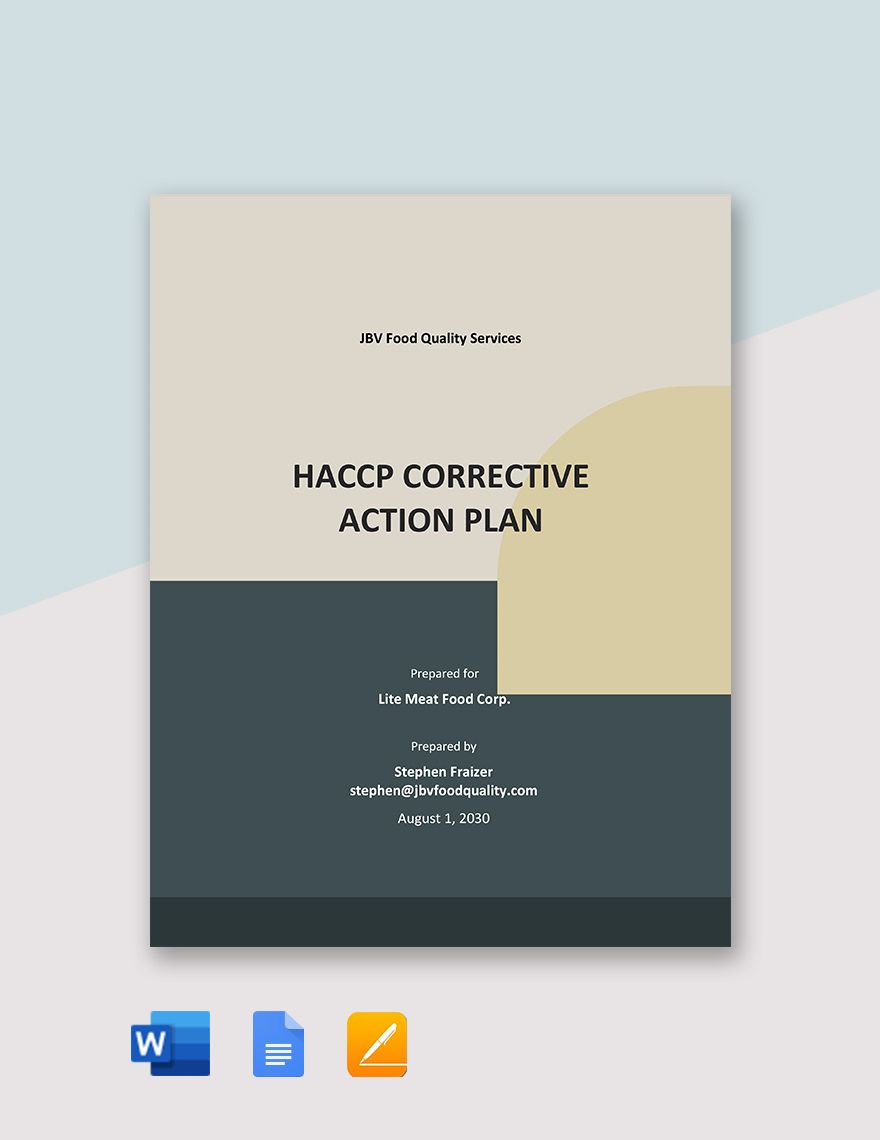Make your Food Safety Standards Shine with HACCP Plan Templates from Template.net
Keep your food service operations compliant, efficient, and worry-free with HACCP Plan Templates from Template.net. Designed for restaurant owners, food safety managers, and catering professionals, these templates provide a reliable framework to ensure your establishment meets health and safety regulations. Accelerate the planning and documentation process with ease—whether you're launching a new restaurant or auditing an existing kitchen. These templates allow you to seamlessly map out critical control points and identify potential hazards, offering peace of mind with every meal served. Featuring sections for critical details such as procedure timelines, staff responsibilities, and monitoring actions, these templates require no specialized skills to utilize. Enjoy the benefit of professional-grade designs that are easy to customize both in print or digital formats, ensuring a polished presentation every time.
Discover the many HACCP Plan Templates we have on hand, each crafted to suit a variety of food service needs. Begin by selecting the perfect template that matches your operation's style, then swap in personalized assets, such as your logo or specific menu items, and tweak the color palette or font choices to reflect your brand's aesthetics. Enhance your templates with advanced touches by dragging-and-dropping icons, graphics, or incorporating animated effects for digital presentations. The possibilities are endless, allowing anyone to achieve outstanding results without technical prowess. Stay ahead with our regularly updated templates, ensuring you always have access to the latest designs and industry trends. When you’re finished, download or share your HACCP plans via link, email, or print, ready for distribution across multiple channels or collaboration with your team in real time.

